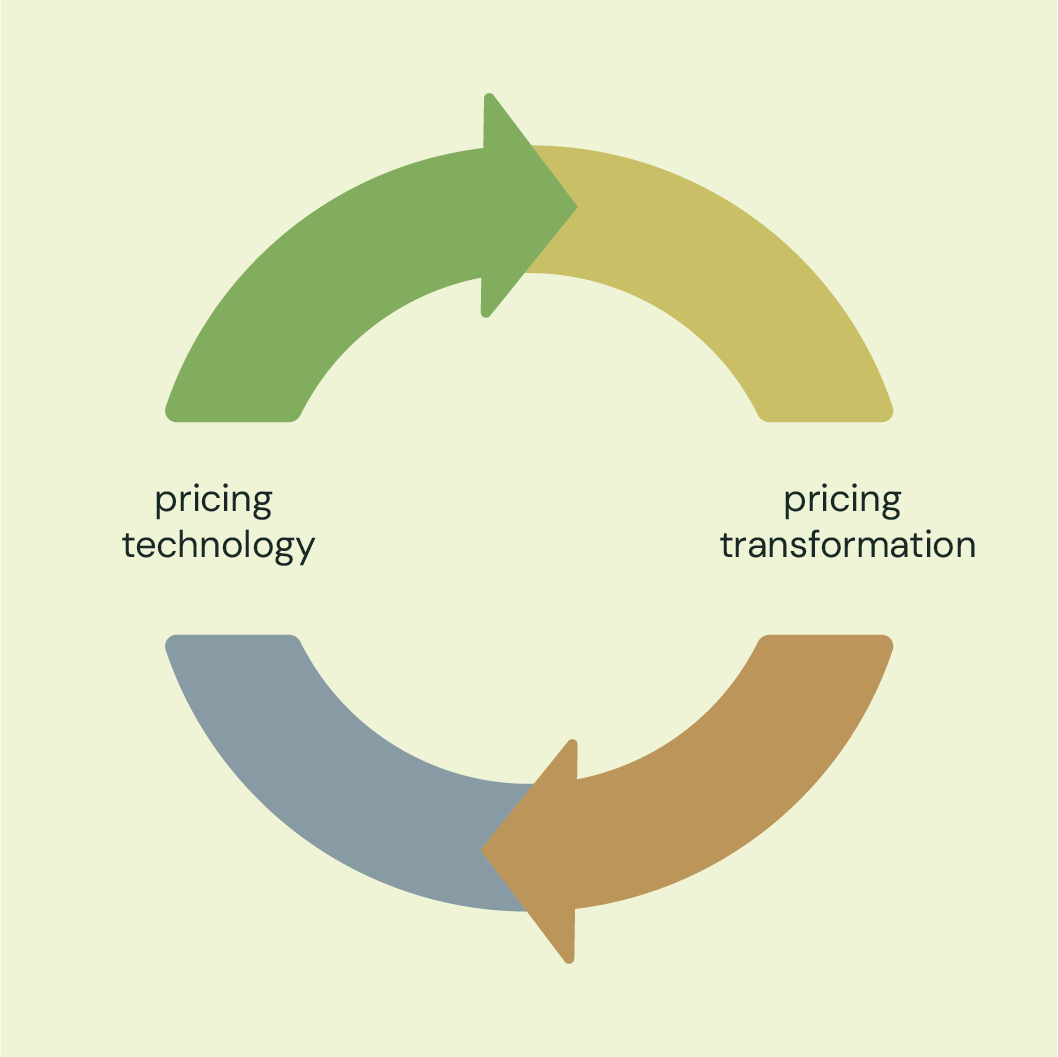Pricing is undergoing a fundamental shift. What was once a tactical lever, often buried in spreadsheets or legacy systems, is now recognized as a key source of margin, differentiation, and strategic agility. But the path to modern pricing is not linear. It requires more than software or tools. It requires transformation of processes, systems, strategies, mindsets, and behaviors.
Companies that invest in pricing technology without transformation often find themselves frustrated by underused systems. Those that pursue transformation without technology struggle to scale or sustain change. The truth is simple: pricing transformation and pricing technology are interdependent, and one cannot succeed without the other.

When Pricing Transformation Happens Without Technology
Transformation without technology often begins with good intentions. Leaders recognize the need to evolve pricing practices, launching new initiatives, redesigning approval flows, creating cross-functional pricing teams, and defining new roles.
But without supporting technology, these changes remain largely manual. Excel becomes the default, pricing logic is embedded in scattered files and tribal knowledge, and integration across functions is slow and error-prone. Efforts to segment pricing or enforce rules rely on human intervention rather than system logic.
This leads to inconsistency, delays, and missed opportunities. Without automation, speed suffers. Without integration, teams make decisions with partial data. Without scalability, change remains localized. Over time, the energy behind the transformation fades, not because people reject the strategy, but because the tools do not support the shift. The gap between pricing ambition and operational capability becomes visible, leaving transformation fragile and unsustainable.
Whether you start with pricing technology right away depends on your pricing maturity, change management capacity, and data readiness. A strong foundation can pave the way for pilot programs and proofs of concept.
When Pricing Technology Happens Without Transformation
The opposite pattern is equally common. Companies invest in pricing software expecting better decisions, higher margins, or faster quoting. They bank on quick ROI and short-term wins. Many software vendors encourage this approach, selling technology as a standalone solution.
Without a transformation mindset, implementation becomes a technical project rather than a business initiative. Adoption suffers when users are not involved in the design or the system does not reflect real workflows. Pricing teams configure tools without aligning them to broader commercial strategy. Governance remains weak, KPIs stay the same, and incentives are misaligned.
In these cases, the technology exists but remains underutilized. Discount rules are bypassed, price guidance is ignored, and segmentation logic sits idle. The system is technically sound but commercially isolated, leaving leadership skeptical of further investment.
The Nature of True Pricing Transformations
Successful pricing transformation is both systemic and behavioral. It touches structure, culture, process, and tools. It requires a clear vision and a willingness to change how pricing decisions are made, supported, and enforced.
These transformations take time because they require organizations to revisit assumptions, align departments, and build new capabilities. It is not just about installing software or rewriting pricing rules. It is about building confidence, creating consistency, and enabling commercial teams to execute better pricing decisions at scale.
How to Align Pricing Technology and Transformation for Lasting Impact
To succeed, companies need a roadmap that combines both the business and technology dimensions of pricing. They must balance speed with sustainability, ensuring automation is introduced only when users are ready to adopt and trust it.
Industrializing pricing processes is only possible when strategy, governance, and ownership are clear. The best pricing transformations do more than change how prices are calculated; they reshape how pricing is perceived and prioritized across the organization.
In the end, the goal is not to choose between technology or transformation, but to orchestrate both in parallel. When done right, pricing becomes not just a lever for profit improvement, but a capability that enables companies to navigate complexity with greater control and confidence.
A Call to Action for Pricing Leaders
Pricing leaders face a moment of reckoning. Manual processes, isolated tools, and fragmented decision-making are no match for the speed and complexity of today’s markets. Yet too many companies invest in technology without transformation or drive transformation without the infrastructure to sustain it.
This is also a moment of possibility. Pricing can shape competitive outcomes, protect margins, and drive intelligent growth. Leaders who act boldly, invest wisely, and integrate change with intention will define the next era of commercial excellence.
This is not just a technology project or a governance initiative. It is a structural shift in how pricing is done and what it can deliver. It demands courage, clarity, and a roadmap that spans people, process, data, and systems.
The call to action is clear: do not wait. Do not assume pricing maturity will evolve on its own. Lead the transformation with discipline. Integrate the technology with purpose. Build a pricing organization that can thrive in today’s volatile, complex, and opportunity-rich market.
Ready to drive lasting pricing transformation and results? Get in touch with our pricing experts to get started.
